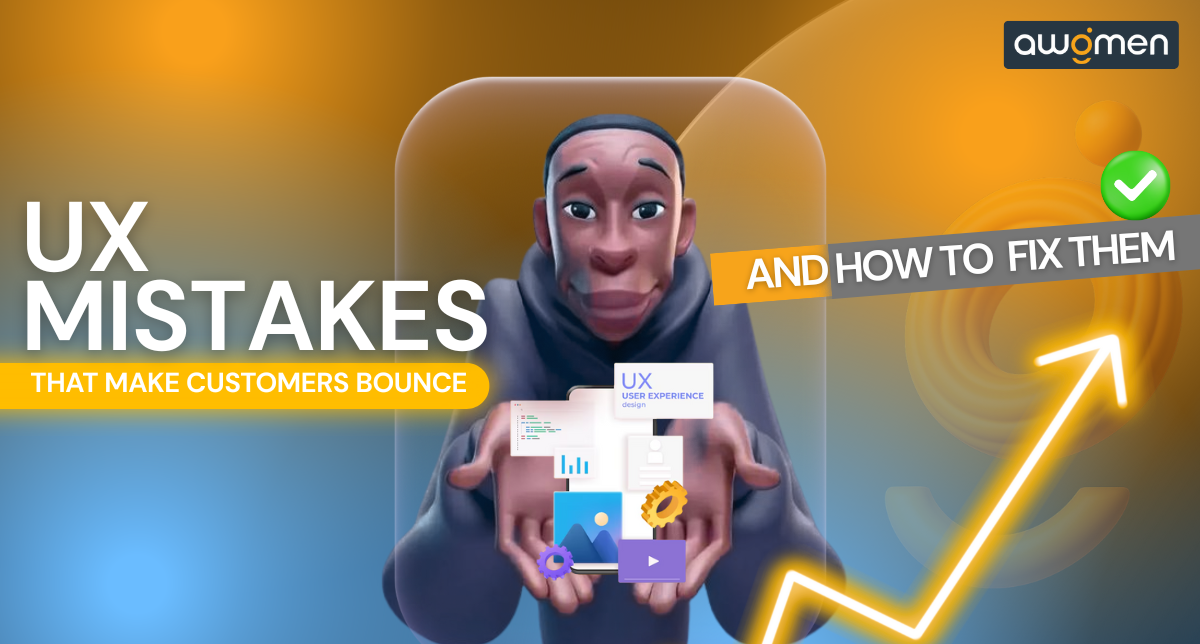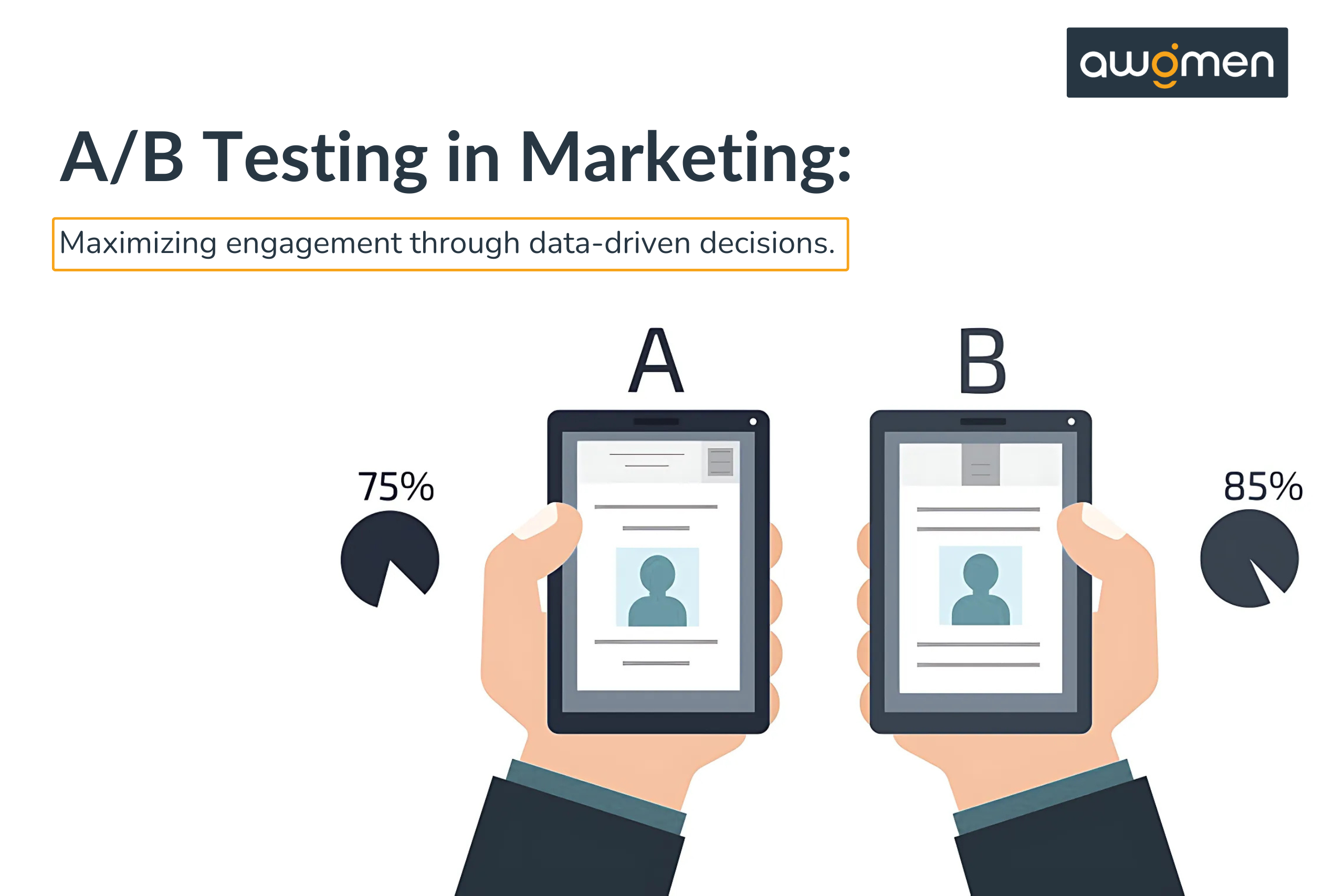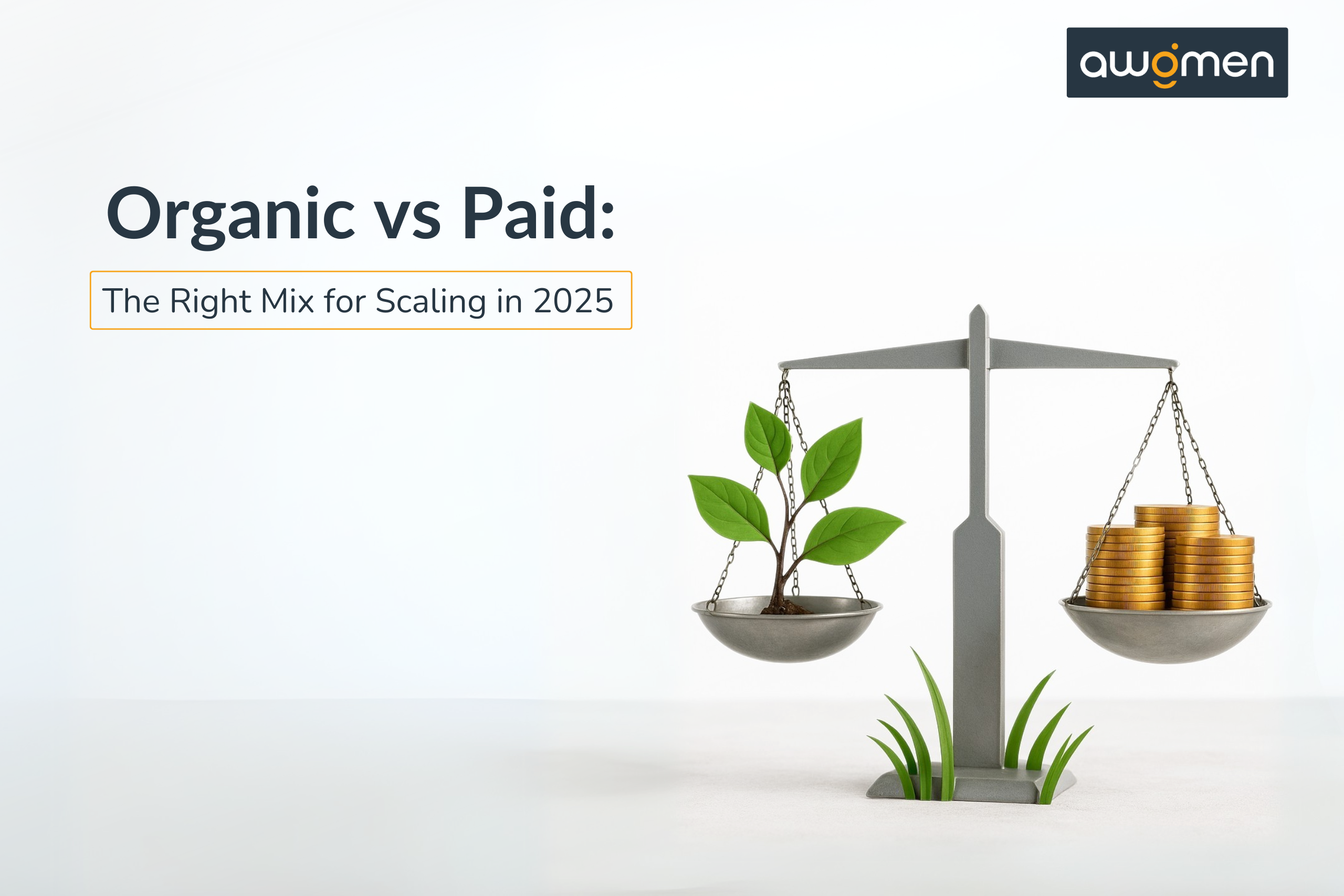UX Mistakes That Make Customers Bounce (and How to Fix Them)

What if I told you your product isn't failing because it's bad - but because it's frustrating?
You’re not losing customers due to pricing or competition. You’re losing them because your interface isn’t intuitive, your website loads like it’s stuck in 2010, and your call-to-action is either too subtle or too confusing.
User experience (UX) is no longer optional. It defines whether your visitors stick around, convert, or leave without a trace. Let’s explore the most common UX mistakes that quietly drive users away - and how to fix them with clarity, simplicity, and design thinking.
Mistake #1: Slow Load Time
Why users leave:
If your website or app takes longer than 3 seconds to load, most users will abandon it before they even see your content.
What typically happens:
A fashion e-commerce brand ran a major influencer campaign. Traffic surged, but conversions remained flat. On investigation, it turned out the homepage took over 7 seconds to load due to uncompressed high-res product images.
How to fix it:
-
Compress all images using WebP or similar formats
-
Use lazy loading for off-screen content
-
Upgrade to faster hosting or implement a CDN
-
Minimize the number of scripts running on each page
A fast website isn’t just good for UX - it’s essential for SEO and mobile conversions too.
Mistake #2: Confusing Navigation
Why users leave:
When users can’t find what they’re looking for, they won’t stick around to figure it out.
What typically happens:
A SaaS company had a homepage loaded with nested menus and ambiguous labels. Visitors found it difficult to figure out what the product did or where to start, resulting in high drop-offs during the onboarding phase.
How to fix it:
-
Limit the top-level navigation menu to 5–7 key items
-
Use familiar, intuitive labels like “Pricing”, “Features”, “Try Now”
-
Include a clear visual hierarchy and use whitespace strategically
-
If your page is long, add a sticky menu or quick-scroll options
Good navigation acts like a roadmap - users should always know where they are and where they can go next.
Mistake #3: Weak or Hidden CTAs
Why users leave:
If there’s no clear next step, users won’t take one.
What typically happens:
A health blog transitioned into a paid app model, but the sign-up CTA was buried in the footer. Users read content but rarely signed up, simply because they weren’t guided to do so.
How to fix it:
-
Make the CTA visible above the fold
-
Use strong, action-oriented language like “Start Free Trial”, “Download Now”, or “Book a Demo”
-
Repeat CTAs at natural points throughout the page
-
Use color contrast and spacing to make CTAs stand out without being intrusive
The goal of UX is not just to inform - but to guide. Don’t make users guess what to do next.
Mistake #4: Overwhelming Text and Poor Visual Flow
Why users leave:
Long blocks of text without structure can overwhelm users, especially on mobile.
What typically happens:
A personal finance platform had insightful content but displayed it in long paragraphs with no bullets or headings. Readers bounced before finishing the first section.
How to fix it:
-
Break content into short paragraphs and use subheadings
-
Add bullet points, numbered lists, or icons for scannability
-
Use a clear visual hierarchy and readable fonts
-
Incorporate diagrams or visuals where helpful
People scan before they read. Structure your content to be skim-friendly first - detailed second.
Mistake #5: Poor Mobile Experience
Why users leave:
If your platform isn’t optimized for mobile, you’re automatically alienating over half your audience.
What typically happens:
A local tour booking site received over 70% mobile traffic but had forms that were too small, buttons that overlapped, and images that didn’t scale. As a result, mobile users abandoned the process halfway.
How to fix it:
-
Design mobile-first rather than retrofitting a desktop design
-
Ensure buttons are large enough and spaced for thumb tapping
-
Use flexible, responsive layouts and test across multiple devices
-
Avoid full-screen pop-ups that are hard to close
Mobile experience isn't a separate consideration - it’s the primary experience for most users.
Mistake #6: No Visual Feedback or Microinteractions
Why users leave:
Users need confirmation that their actions are being registered. Without feedback, they assume the interface is broken.
What typically happens:
A multi-step booking form on a service platform had a “Submit” button with no loading animation or success message. Users clicked multiple times, thinking it hadn’t worked, and some left thinking the process failed.
How to fix it:
-
Show loading spinners or progress indicators on key actions
-
Provide success/failure feedback after each form step
-
Add hover states, button animations, and subtle transitions
-
Validate form fields in real time instead of only at the end
Microinteractions build trust. They tell users, “Yes, that worked,” or “No, try again” - in real time.
Mistake #7: Ignoring Accessibility
Why users leave:
If your site isn’t usable by people with disabilities, you’re excluding a huge portion of your potential audience.
What typically happens:
An educational platform designed with pastel color schemes and low contrast, unintentionally making the content unreadable for visually impaired users. It also lacked keyboard navigation support.
How to fix it:
-
Use strong contrast between text and background
-
Add descriptive alt text to all images and icons
-
Ensure all content is keyboard-navigable
-
Follow WCAG (Web Content Accessibility Guidelines)
Accessibility isn’t just compliance - it’s inclusion. And inclusive design benefits everyone.
Final Takeaway: Friction Kills Conversion
Your website might be beautifully designed, well-researched, and feature-rich - but if your users get stuck, confused, or frustrated, none of that will matter. They’ll bounce, often without telling you why.
The key isn’t just adding more features - it’s removing friction.
UX Fix-It Checklist:
-
Load in under 3 seconds
-
Keep navigation simple and predictable
-
Highlight CTAs clearly and repeatedly
-
Structure content for easy scanning
-
Prioritize mobile users
-
Include visual feedback in every interaction
-
Design with accessibility in mind
In a world full of options, users don’t wait for a better experience - they find one.
Make sure you have that better experience.
Comments
Nice Comment
Leave a Comment
Resents Articles




Nice content